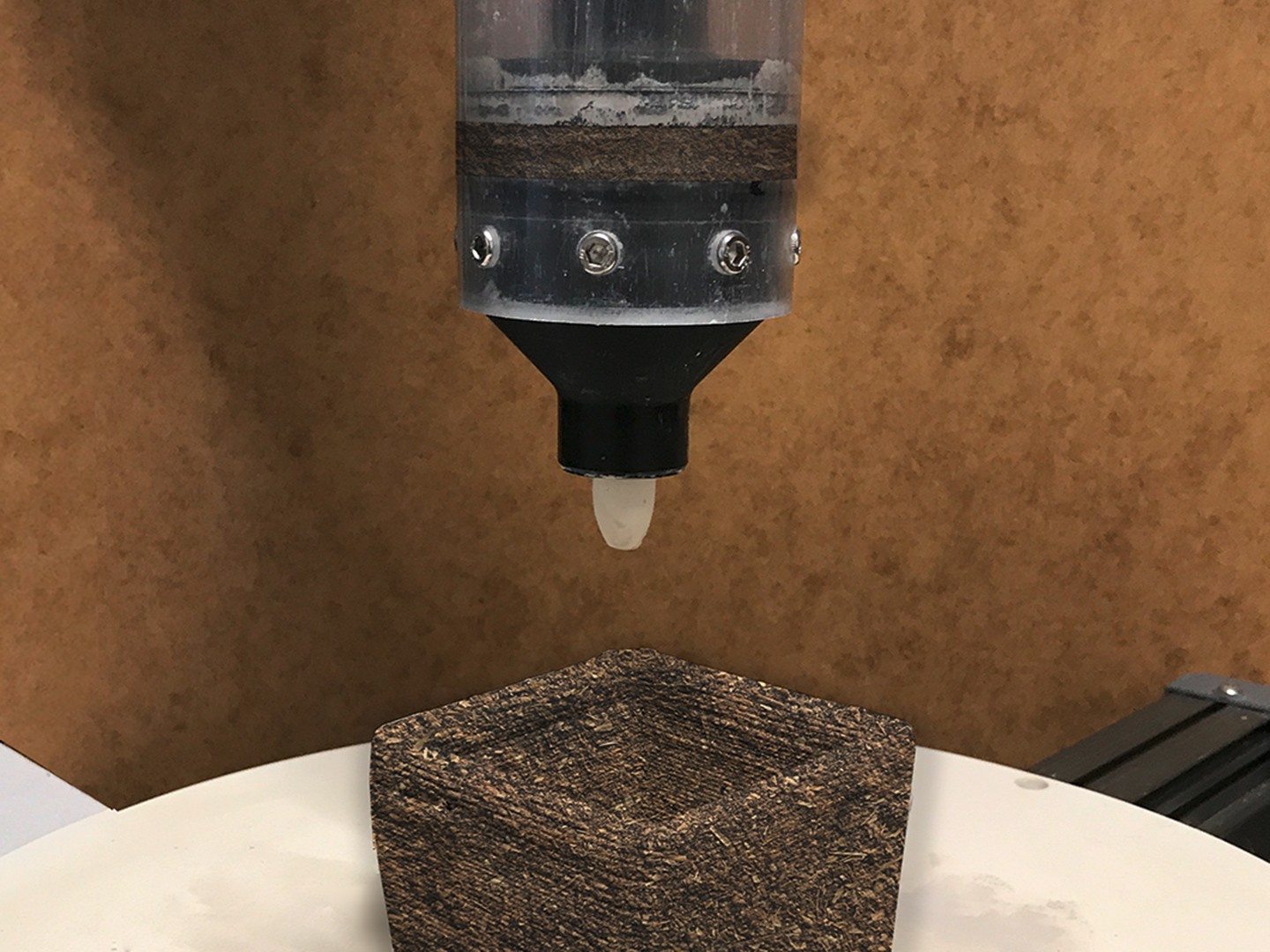As healthy and tasty as mushrooms happen to be, they are good for much more than just the dinner plate. Fraunhofer UMSICHT and Fraunhofer IBP are investigating mushroom-based materials that are suitable for eco-friendly sound absorption.
The incessant chatter of office coworkers on the phone and loud music coming from next-door can be distracting. The sound absorption panels for walls and room fittings used in today’s interior designs are usually made of mineral fibers or synthetic foams. Some of these materials are not particularly sustainable or easily recycled. In a bid to bring to market a more eco-friendly and more effective alternative, the Fraunhofer Institute for Environmental, Safety and Energy Technology UMSICHT and the Fraunhofer Institute for Building Physics IBP are developing sound absorbers made of mushroom-based materials. Julia Krayer, a project manager and research fellow at Fraunhofer UMSICHT in Oberhausen, came up with this idea. “The focus in material development is on vegetal substrates and mycelium,” says Krayer. Mycelium consists of a finely spun web of filamentous hyphae. In their natural habitat, some species’ underground mycelia may grow to span more than a square kilometer.
Mycelial strands for the Fraunhofer UMSICHT project are cultivated in the lab. Mycelium is first mixed with a vegetal substrate consisting of straw, wood and food production waste, and then printed into any desired shape with a 3D printer. “The mycelial threads spread throughout the substrate, growing to form a solid structure,” says Krayer. Once these vein-like mycelial strands have permeated the granular substrate, the product is dried in a kiln to kill the fungus. The material produced in this fashion features a porous surface, enabling it to absorb sound. In combination with the printed porous structures, it makes for an excellent soundproofing panel. Remarkably effective, fair on the environment and easy on resources, these sustainable fungal sound absorbers’ benefits do not end there: “The structure permeated by mycelium is solid, so future sound absorbers could be made of much thinner layers,” says Roman Wack of Fraunhofer IBP in Stuttgart. He is working with Julia Krayer on this project.
The potential applications for this mycelial material are not limited to acoustics: “The end products could probably be used as insulating material, but this would require more intensive research,” says Krayer. Mycelia could be a promising solution for producing ‘fungal’ faux leather, fabric and plastic, with mushroom-based materials featuring prominently in apparel, furniture and the housing of electrical appliances.
